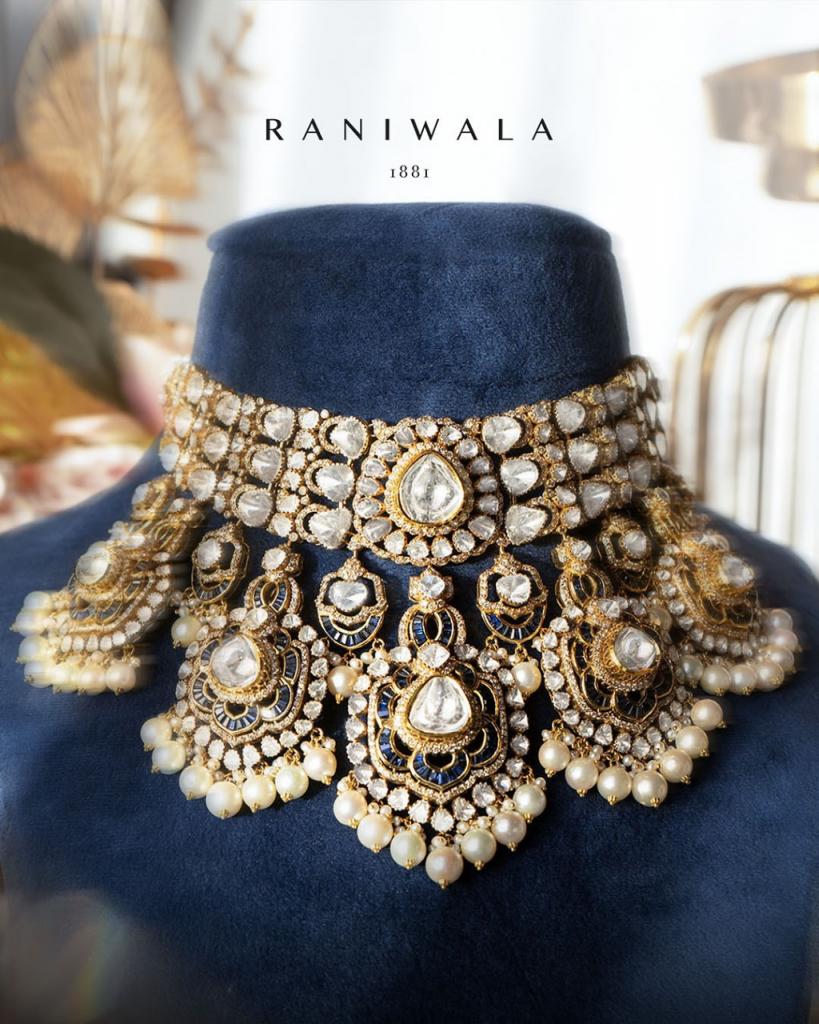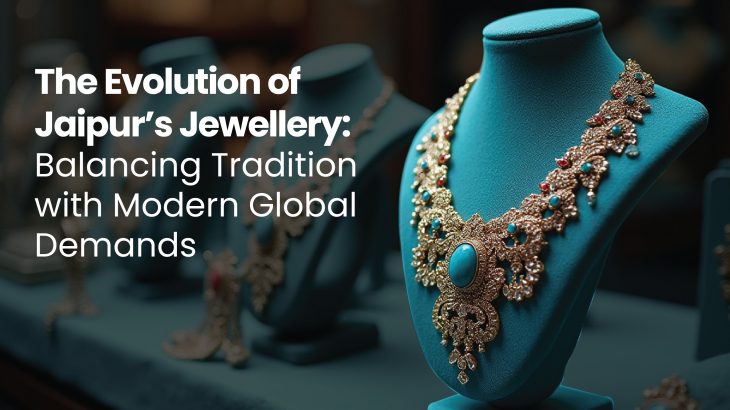Jaipur, the Pink City of India, has long been celebrated for its timeless elegance, royal history, and rich artisanal traditions. Among its many crafts, jewellery holds a particularly special place. Jaipur’s jewellery market, rooted in centuries-old techniques like Kundan, Polki, Meenakari, and Thewa, has evolved into a dynamic industry where tradition and modern design coexist beautifully. Today, this evolution preserves the city’s cultural heritage and positions Jaipur as a global trendsetter in jewellery innovation.
For design students, Jaipur is a living, breathing classroom filled with endless inspiration and real-world learning opportunities. In this blog, let’s explore how Jaipur’s jewellery journey has adapted over time, blending heritage craftsmanship with fresh, contemporary design, and why it continues to inspire young designers worldwide.
A Glorious Beginning: Royal Patronage
The roots of Jaipur’s jewellery industry go back to the 18th century, when Maharaja Sawai Jai Singh II invited skilled artisans from across India to settle in the newly founded city. With royal support, crafts like Kundan (gemstones set in pure gold) and Meenakari (enamel work) flourished, creating intricate jewellery for kings, queens, and nobility.

Even today, renowned names like The Gem Palace and Amrapali continue to keep these traditional techniques alive. Generations of artisans in Jaipur still handcraft beautiful Kundan and Polki pieces that are admired around the world. Their jewellery blends old-world charm with modern appeal, proving that tradition remains at the core of Jaipur’s jewellery market.
Shifting Sands: Adapting to a Changing Audience
When India liberalised its economy in the 1990s, global fashion trends started shaping consumer preferences. Jaipur’s jewellery industry quickly recognized the shift — younger buyers began looking for lighter, more versatile jewellery that could move effortlessly from everyday wear to special occasions. This sparked a transformation in design sensibilities. While the essence of traditional craftsmanship was preserved, designers started exploring sleeker settings, fresh gemstone pairings, and more modern styles.

Jaipur’s Amrapali Jewels is a standout example of this evolution. Originally celebrated for reviving tribal jewellery traditions, the brand has successfully reinterpreted these age-old styles to suit the tastes of the modern woman. Today, their pieces reflect a perfect mix of cultural depth and contemporary elegance — appealing to audiences both in India and across the world.
The Rise of Contemporary Boutiques and Studios
In recent years, Jaipur has seen the rise of boutique jewellery studios that focus on both design innovation and ethical practices. Brands like Zoya by Tata offer a fresh take on traditional craftsmanship. Their collections often draws inspiration from Rajasthan’s architecture and natural landscapes with a modern twist.

At the same time, independent designers like Sunita Shekhawat have reimagined the classic Meenakari technique. Moving beyond traditional motifs, her work features soft pastel shades, abstract designs, and lightweight pieces such as rings and earrings — perfect for younger, style-conscious buyers.
This new wave of creative entrepreneurship has opened exciting learning avenues for Jewellery design students. With access to internships, collaborations, and diverse design styles, they get to explore modern jewellery design while staying rooted in Jaipur’s rich heritage.
Technology and New-Age Craftsmanship
Technology has played a key role in shaping the next chapter of Jaipur’s jewellery industry. Tools like Computer-Aided Design (CAD) and 3D printing have made it possible to design complex prototypes and explore forms that were once difficult to achieve by hand. Today, many manufacturing hubs in Jaipur blend traditional techniques with modern tools, achieving a high level of precision while keeping the essence of handcrafted jewellery intact.

As part of our industrial visits, students get a first-hand look at this blend of old and new. They interact with master artisans and also witness how digital design tools enhance traditional methods. For example, Birdhichand Ghanshyamdas Jewellers has adopted CAD to streamline the initial design process, but still relies on hand-setting and finishing to preserve the authenticity and soul of each piece.
Sustainability and Ethical Luxury
Another important trend shaping Jaipur’s jewellery evolution is the growing focus on sustainability. Today’s consumers are more aware of where their jewellery comes from — valuing ethical sourcing, fair labour, and reduced environmental impact. In response, many Jaipur-based brands are adopting responsible practices such as using recycled gold, ethically sourced gemstones, and supporting fair wages for artisans.
Raniwala 1881 is known for its exquisite craftsmanship and deep-rooted legacy in traditional jewellery. They focus on reviving antique jewellery styles, combining timeless elegance with sustainable, eco-conscious materials. This collection is a nod to Jaipur’s rich jewellery-making tradition while reinforcing the brand’s commitment to ethical production.

This growing shift towards mindful luxury opens up exciting opportunities for young designers. They are now challenged to innovate responsibly — combining storytelling, heritage, and sustainability in ways that feel both authentic and relevant.
Jaipur Today: A Global Jewellery Capital
Today, Jaipur stands as more than a historic city or a popular tourist spot — it has evolved into a global centre for jewellery manufacturing, design innovation, and retail excellence. With internationally recognized trade events like the Jaipur Jewellery Show (JJS) and IIJS Signature, the city draws buyers, designers, and investors from across the world.
For design students, Jaipur offers more than education, it offers immersion. The city is a dynamic classroom where heritage meets innovation, and tradition inspires forward-thinking design. From industrial visits to hands-on workshops, Jaipur nurtures the next generation of jewellery designers with experiences no textbook can provide.
If you’re an aspiring jewellery designer, there’s no better place to learn than in the heart of India’s jewellery capital — Jaipur. At ARCH, we offer a comprehensive Jewellery Design program that blends creative thinking with practical skills rooted in centuries of craftsmanship.
Our students learn through theory, and they experience the industry firsthand. From industrial visits to iconic jewellery houses like The Gem Palace, to hands-on workshops on techniques like Kundan, Polki, and Meenakari, we ensure every learner gains deep insight into both traditional and modern practices.
Being in Jaipur, our campus is perfectly positioned to connect students with master artisans, boutique studios, and global trade events like the Jaipur Jewellery Show. The city becomes a live lab for exploration, where local markets, design studios, and exhibitions constantly inspire creativity.
Whether you dream of starting your own label, designing for global brands, or reviving traditional arts with a fresh voice, ARCH offers the mentorship, exposure, and environment to help you shine. Join us today!
